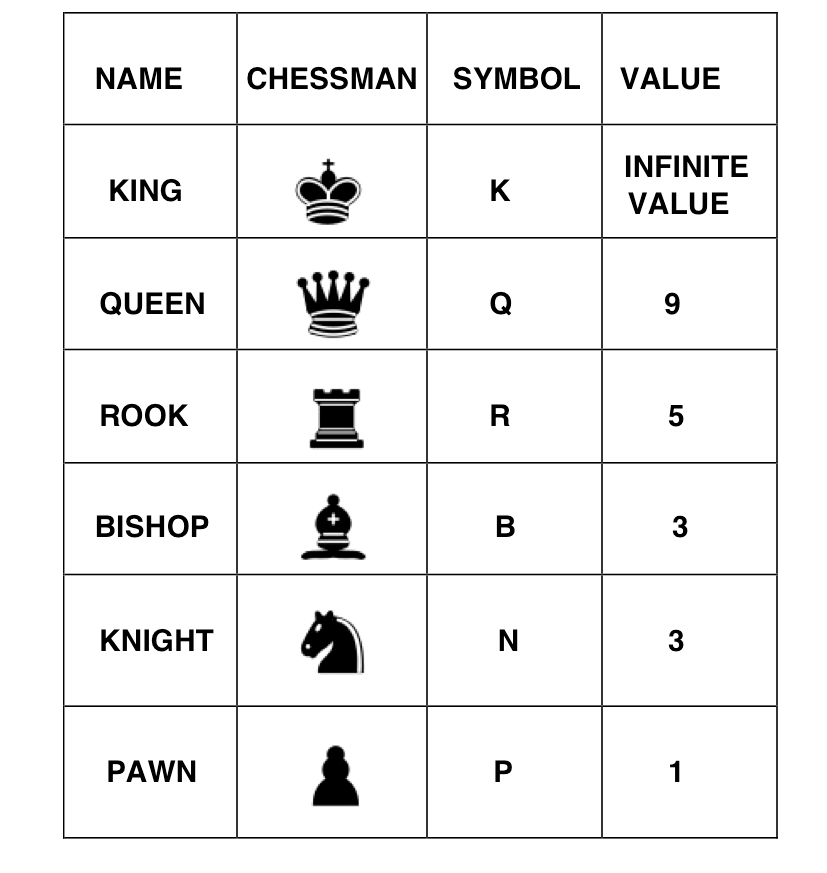

#Chess piece moves diagnolly full
Queens can cross the board seven times diagonally with a full range of movement.It can only move to one adjacent square on its own (Own piece) or capture (Enemy piece) if another piece enters its path. Any unoccupied square on the diagonal can be moved forward or backward by the Queen, barring obstructions.The Queen The Chess Queen Diagonal Move Fact When they are used correctly with appropriate bishop tactics, they can be devastating to your opponent when a clear long-range path is found through discovered attacks. A busy centerboard can restrict the bishop’s movement in the early stages of chess games due to the restriction to only diagonal movements. The longer a bishop piece remains on the board, the stronger it becomes. A diagonal move out of the back rank requires moving the pawns on the second rank on files, b, d, e, and g to obtain the freedom of movement. The bishops were introduced to you there.įrom kingside to the queenside, the bishops are ranked as follows: F1 to Queenside C1 to Kingside. Initially, they start on the first rank of the board, where there are Knights and Kings from one side (Kingside Bishop) and Knights and Queens from the other (Queenside Bishop). A black or dark-colored bishop should be placed between two or more white bishops. As soon as the bishops appear on the board, the game of chess begins. A bishop starting on a light square will stay there until the end of the game, similar to a bishop starting on a dark square.īishop is the chess piece that can only move diagonally in the game.The bishop piece, including the King, can capture any piece on the board.Bishops can move up to seven squares diagonally with their full range.If another piece blocks its path, it can only move to an adjacent square (either a square it owns or an enemy square). Chess bishops cannot jump over other pieces.Bishops can move diagonally forward or backward without obstruction only if there are no obstructions.Hope to hear from you! The Bishop Chess Bishop Diagonal Move Could a knight disguise himself as a diagonally moving piece on a chessboard, according to you? Please tell me in the comments section below. If you prefer the opposite, that’s fine too. While the knight’s move is diagonal, it is a vertical move followed by a horizontal one, so you cannot truly say it is a diagonal chess move. The knight can also move diagonally (the infamous L-shaped move), although rather awkwardly. This overview covered most chess piece movements, but the rook and knight were omitted.

However, it becomes clear how the move works as long as you see the lines on the chessboard as squares. For beginners, this movement might seem strange. I find it quite amusing to imagine the number of chess pieces that can move diagonally. It is a good place for all the information you need about these pieces’ diagonal movement. This article explores the quartet’s full range of diagonal possibilities, answering your frequently asked questions about diagonally moving chess pieces. On the chess board, diagonal lines make up all the possibilities for pieces. The one who can move diagonally, the one who can move only diagonally, and the one who moves only diagonally but under certain circumstances. There are many pieces at your disposal to go to war with your opponent on the chess board, and you can use these pieces to make different moves based on your abilities and your limitations. There is a varying degree of reach along the diagonal of each piece, and the pawn, which is the final piece of the quartet, can only move diagonally when capturing. Those are the Bishop, The Queen, and The King. On the chessboard, there are 4 chess pieces that can move diagonally across it.


 0 kommentar(er)
0 kommentar(er)
